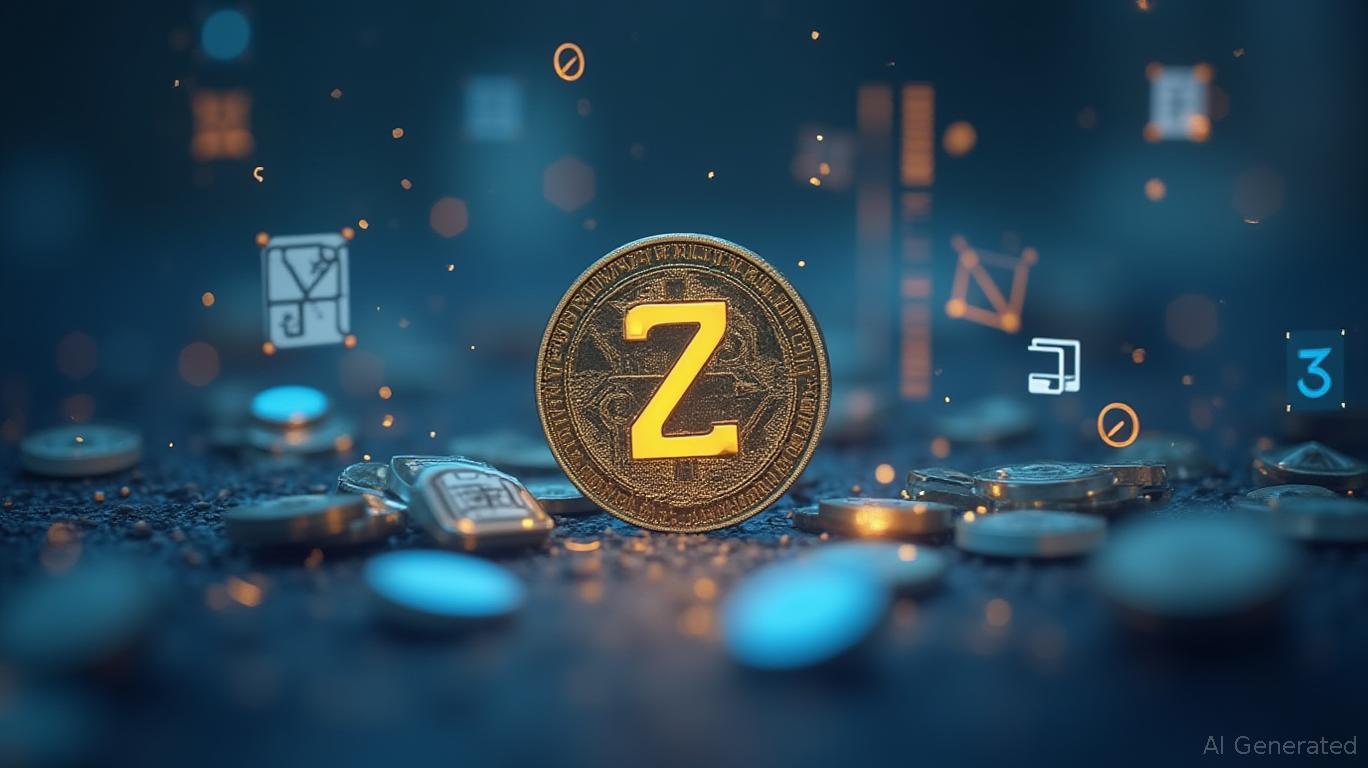Zelle Adopts Stablecoins to Address Challenges in Cross-Border Payments
- Zelle plans to expand international remittances using stablecoins, leveraging its $1T domestic transaction network and 150M users. - Backed by JPMorgan, Bank of America, and Wells Fargo, the move targets speed, cost, and compliance challenges in cross-border payments. - The initiative aligns with U.S. regulatory clarity post-GENIUS Act, positioning stablecoins as a bridge between traditional finance and blockchain. - Challenges include AML/KYC compliance and competition from PayPal, crypto-native stablec
Zelle, a peer-to-peer payment platform owned by U.S. banks, is preparing to enter the international remittance market by utilizing stablecoins—a step that could significantly alter the landscape of cross-border payments and pose new competition to established fintech companies. Early Warning Services, which operates Zelle, revealed plans to extend the network’s domestic achievements—processing more than $1 trillion annually and serving 150 million users—by delivering quicker and more affordable global money transfers, as reported by
This move is part of a growing trend in the financial sector toward stablecoins—digital assets tied to government-backed currencies like the U.S. dollar. These coins combine the dependability of fiat with the efficiency of blockchain technology and have gained more regulatory certainty in the U.S. since the GENIUS Act was enacted in July 2025, as noted by

Industry analysts believe Zelle’s timing and strategy are advantageous. Payments expert Aaron McPherson remarked that Zelle’s partnership with major banks allows it to avoid the disjointed approaches of single institutions. "This is best accomplished through collective effort, not by individual banks," he explained, adding that stablecoins’ regulatory acceptance and instant settlement features make them well-suited for international payments, as reported by Digital Transactions. With a network linking 2,300 U.S. banks and credit unions, Zelle could speed up stablecoin adoption by embedding them into existing digital banking platforms, a point raised by American Banker.
Nonetheless, there are hurdles to overcome. Ensuring compliance with anti-money laundering (AML) and know-your-customer (KYC) rules will demand strong systems, especially as Zelle deals with different regulations worldwide. Tony DeSanctis from Cornerstone Advisors cautioned that non-bank entities like PayPal or crypto-based stablecoins such as USDC may also vie for users, particularly among businesses looking for proven alternatives, as mentioned by American Banker. Furthermore, while Zelle has
This development is part of a larger shift in the sector. Rivals like PayPal and Wise are also testing stablecoin-powered remittance solutions, and reports indicate Zelle has previously weighed launching its own stablecoin, as stated by
Early Warning Services has promised to share further information in the near future, including launch schedules and technical details. For now, the announcement marks a significant milestone for stablecoins, which have reached a $312 billion market capitalization and are increasingly seen as a link between conventional finance and blockchain technology, according to Crowdfund Insider.
Disclaimer: The content of this article solely reflects the author's opinion and does not represent the platform in any capacity. This article is not intended to serve as a reference for making investment decisions.
You may also like
Arc's "Economic OS" Launches Public Testnet, Partnering with Over 100 Institutions
- Circle's Arc blockchain launches public testnet with 100+ institutions including Visa, HSBC, and BlackRock. - Designed as an "Economic OS," Arc enables instant settlements, privacy controls, and compliance-driven stablecoin ecosystems using USDC as gas token. - Partners like BNY Mellon and AWS test infrastructure supporting tokenized assets, AI-driven payments, and global market integration across four continents. - Circle emphasizes regulatory alignment (e.g., EU MiCA) and plans to transition Arc to com

Is it possible for AI stocks to bounce back, or will the regulatory advantages of crypto reshape the industry?
- AI sector faces 2025 challenges as BigBear.ai and C3.ai report revenue declines due to federal spending cuts and leadership changes. - C3.ai's stock drops 50% amid CEO departure and shareholder lawsuits over alleged business misrepresentations. - Crypto platform IPO Genie ($IPO) emerges as compliance-focused alternative with STO model, CertiK audits, and Fireblocks custody. - $IPO targets $100M AUM by 2026, offering institutional-grade private market access to retail investors via AI-powered deal curatio

Solana News Update: MoonBull's Mobunomics: Navigating Stability and Expansion Amidst a Volatile Crypto Market
- MoonBull ($MOBU) has raised $450,000 in its Stage 5 presale, with 163.36% growth for early investors through a 23-stage 27.40% price increase model. - Its Mobunomics framework allocates 5% of transactions to liquidity, reflections, and burns, while staking offers 95% APY and compounding incentives via 14.6B reward tokens. - The project differentiates from volatile meme coins through structured economic controls, 48-hour liquidity locks, and community governance, contrasting with Solana/TRON's less incent

PayPal collaborates with OpenAI to enable users to make purchases directly through ChatGPT